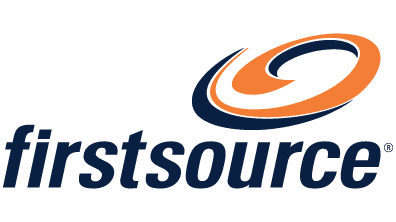Minimize adverse health and financial consequences of Medicaid redetermination relaunching by helping eligible members manage the re-enrollment process.
Medicaid continuous enrollment ended on March 31, 2023. Beginning April 1, 2023, states began to terminate Medicaid enrollment for individuals no longer eligible. These developments are putting the continuity of care for millions of Medicaid program members at risk, with potentially serious financial consequences for healthcare organizations serving large Medicaid populations. Research shows more than 60% of Medicaid recipients don’t realize they need to re-enroll in the program now that continuous coverage has ended. Also, many Medicaid participants today are new in the program and have never been through the redetermination process. They may not know it exists or what it entails.
Healthcare organizations likely are finding their Medicaid recipient contact information is out of date. In addition, some researchers think state agencies will be overwhelmed with redetermination paperwork and productivity issues because of the volume of re-enrollment and the fact that many of their employees have not processed redeterminations before.
Sicker populations, poor health outcomes and increased costs of care are the likely results of eligible members failing to re-enroll. If they haven’t already, healthcare organizations must take steps now to mitigate these outcomes.
Handpicked Related Content
How Tech-Driven Solutions, CMS Proposed Rule Can Save Rural Medicaid MembersMillions at risk for interrupted care
Estimates for how many people have lost Medicaid coverage when continuous enrollment ended range from between 5.3 million to 14.2 million to as high as 15 million. Of those, almost 7 million will remain eligible for the program but will drop out through failure to re-enroll. Another 2.7 million are likely to be eligible for zero-premium marketplace coverage—but again, may not be aware of how to access this coverage.
The short- and long-term implications of up to 15 million individuals losing coverage and care access are enormous. In the near-term, healthcare organizations are likely to see loss of Medicaid revenues. In the longer term, organizations will be caring for sicker patients who need more expensive care. That will drive up costs and strain resources.
Ensure continuity of care: 5 key re-enrollment tactics
Healthcare organizations need to create urgency among the Medicaid populations they serve to bring the redetermination process and its steps top of mind again. Here are five key steps for connecting with Medicaid patients now that continuous coverage has ended:
- Launch education and awareness efforts. Some payers already are reaching out to Medicaid participants about re-enrollment. Provider efforts are lagged: Of the 37% of adults who had heard at least something about Medicaid renewals, just 17.8% had heard the information from a healthcare provider. Providers can help advise Medicaid patients about their options and retain their business as they re-enroll, helping avoid care interruption.
- Gather up-to-date contact information. Medicaid population members tend to change contact data frequently. Much of their file and contact data may be more than two years old. It’s critical to update these records so that awareness information reaches members. Do not underestimate the scope of this task. It includes contact verification; ensuring accuracy of phone numbers on file; obtaining digital consent to text a current mobile number, etc.
- Take an omnichannel approach to outreach and reminders. Healthcare organizations must be strategic in their outreach tactics and implement a modern approach using multiple channels. Defaulting to telephone calls is ineffective because Medicaid participants span age generations and have different channel preferences. No single method will reach all.Further, some participants may prefer assistance from live agents in navigating the re-enrollment process. Healthcare organizations might turn to third parties with nationwide resources to provide trained, knowledgeable staff to help ensure the successful completion of enrollment applications. Experienced service providers also should ensure your outreach efforts meet all state regulatory requirements and restrictions.
- Set up screening systems. Prepare to identify and quickly re-enroll individuals who present as self-pay/uninsured but who meet Medicaid or marketplace eligibility criteria. This ability will be especially critical for healthcare organizations in Medicaid non-expansion states, where patients usually must apply on date of service to be eligible for coverage.
- Advocate with state agencies. Some healthcare organizations are under pressure from their state legislatures to remove ineligible patients from Medicaid programs as quickly as possible. Partner with industry groups that are educating legislatures about the potential costs of disenrollment and the effort involved in routing recently dis-enrolled Medicaid recipients to appropriate health plans.
While the COVID public health emergency has ended, many patients may still be eligible for Medicaid coverage. It makes sense for healthcare organizations to initially focus re-enrollment efforts on the most at-risk members and patients with chronic conditions. That said, helping all individuals access appropriate coverage should minimize disease progression and care gaps. Healthcare organizations are well positioned to assist these patients as continuous coverage ends, improving their health and minimizing the overall cost of care.
With more than 30 years supporting leading payers and providers and recognized as a leader in Medicaid eligibility and enrollment, we bring the experience and expertise required to help your organization prepare for Medicaid Redetermination and ensure continuity of care. For additional information or questions on how Firstsource can help your organization prepare for Medicaid redetermination please contact Deepan Vashi, EVP and Head of Solutions for Health Plans and Healthcare Services at Firstsource and Nate Allen, SVP and Provider Eligibility Practice Leader at Firstsource.










